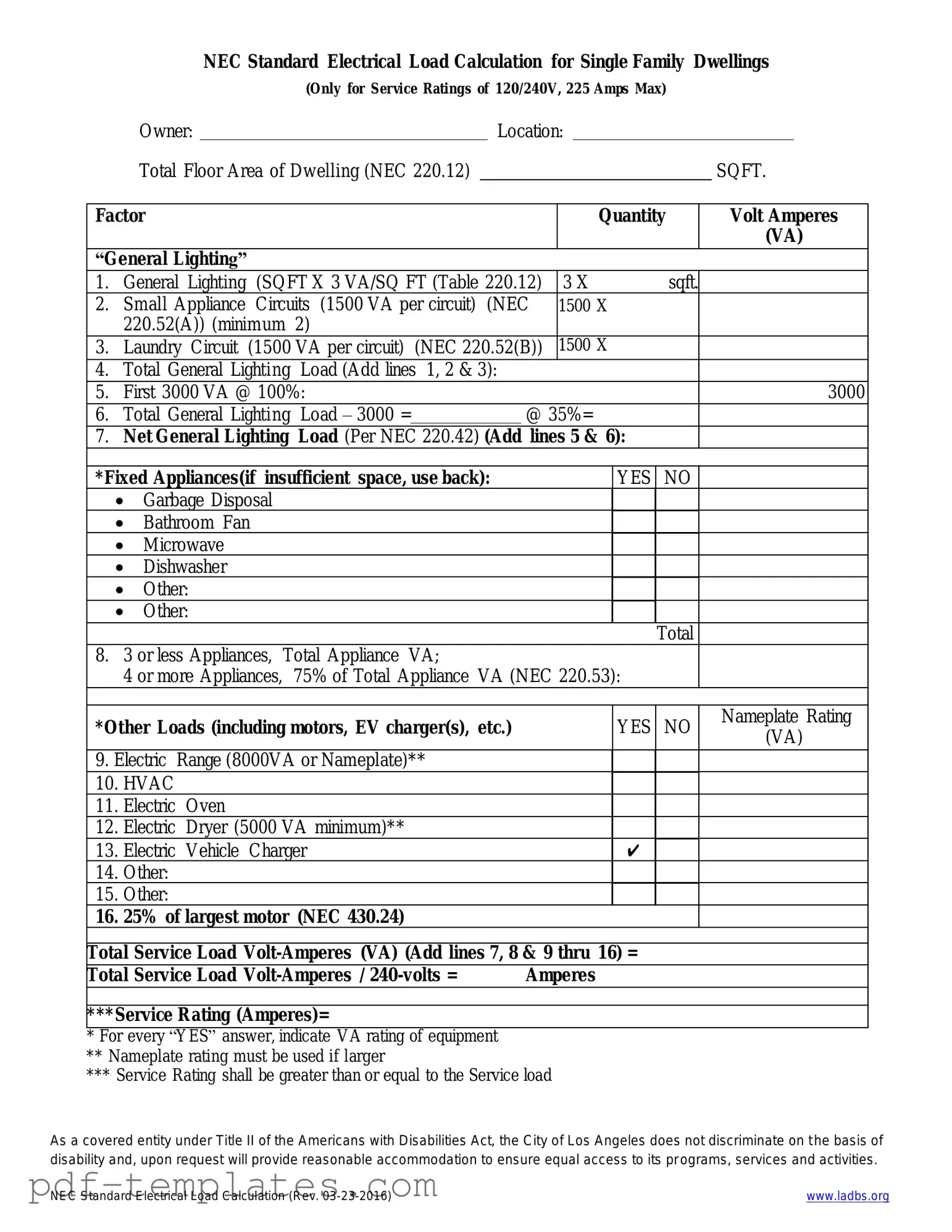The LADBS NEC Standard Electrical Load Calculation form is similar to the National Electrical Code (NEC) guidelines. Both documents focus on ensuring safe and efficient electrical installations. The NEC provides the foundational rules for electrical systems, while the LADBS form helps users apply these rules to specific projects. By following the NEC, the form ensures compliance with safety standards, reducing risks associated with electrical hazards.
Another document with similarities is the Electrical Service Load Calculation Worksheet. This worksheet is often used by electricians to estimate the electrical demand of a building. Like the LADBS form, it requires users to input various parameters, such as the number of appliances and their wattage. Both documents aim to provide a clear picture of the electrical load, ensuring that the service capacity meets the demands of the structure.
For individuals wishing to ensure their healthcare preferences are honored, the Texas Living Will form is a critical document that outlines specific medical treatment wishes. By preparing this legal tool, you can confirm that your healthcare decisions reflect your values, even when you cannot communicate them. More information can be found in our guide on the Texas Living Will form.
The Residential Load Calculation Guide is also comparable. This guide outlines the process of determining electrical loads for residential buildings. It shares a similar goal with the LADBS form: to ensure that electrical systems are adequately sized. Both documents emphasize the importance of accurate calculations to prevent overloading circuits and ensure safety in residential environments.
The Commercial Load Calculation Form serves a similar purpose for commercial buildings. It provides a structured approach to calculating electrical loads based on specific commercial needs. Like the LADBS form, it helps identify the appropriate service size required for safe operation. Both documents prioritize accuracy and compliance with safety regulations, making them essential tools for electrical professionals.
The Energy Code Compliance Document also shares similarities with the LADBS form. This document focuses on energy efficiency and compliance with local energy codes. While the LADBS form primarily addresses electrical load calculations, both documents require detailed information about electrical systems. They aim to promote sustainable practices and ensure that installations meet energy efficiency standards.
Lastly, the Electrical Plan Review Checklist is relevant. This checklist is used during the plan review process to ensure that all necessary calculations and safety measures are in place. Similar to the LADBS form, it requires detailed information about the electrical system. Both documents serve as verification tools to ensure that projects comply with local codes and regulations, ultimately enhancing safety and functionality.
